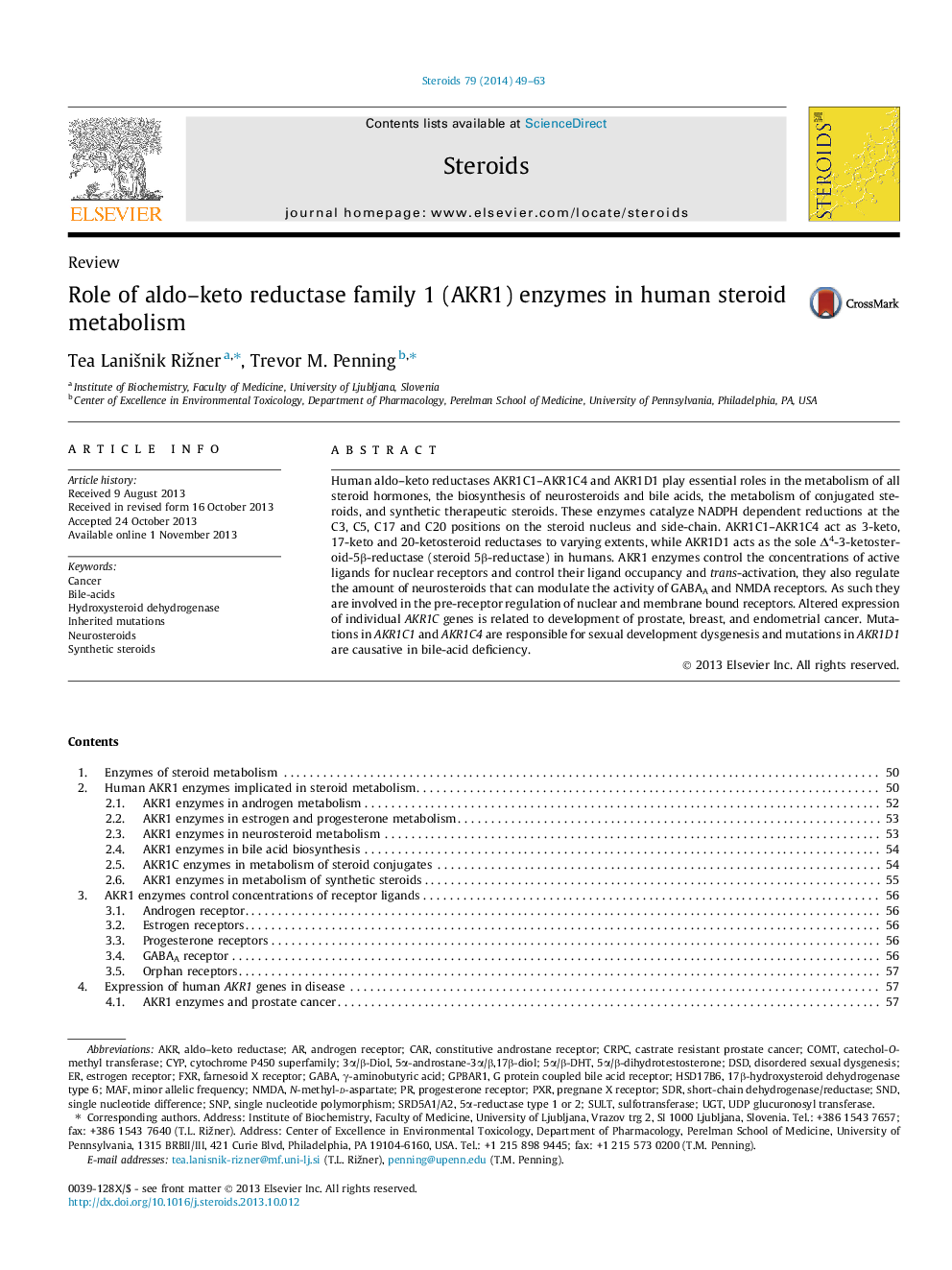| کد مقاله | کد نشریه | سال انتشار | مقاله انگلیسی | نسخه تمام متن |
|---|---|---|---|---|
| 2028092 | 1542728 | 2014 | 15 صفحه PDF | دانلود رایگان |

• The aldo–keto reductase superfamily contains five human steroid-metabolizing enzymes.
• AKR1C isoforms act as 3-, 17- and 20-ketosteroid reductases.
• AKR1D1 is the sole steroid 5β-reductase in humans.
• AKR enzymes control ligand access to nuclear and membrane bound receptors.
• Expression profiles, inherited mutations and SNP support their roles in human disease.
Human aldo–keto reductases AKR1C1–AKR1C4 and AKR1D1 play essential roles in the metabolism of all steroid hormones, the biosynthesis of neurosteroids and bile acids, the metabolism of conjugated steroids, and synthetic therapeutic steroids. These enzymes catalyze NADPH dependent reductions at the C3, C5, C17 and C20 positions on the steroid nucleus and side-chain. AKR1C1–AKR1C4 act as 3-keto, 17-keto and 20-ketosteroid reductases to varying extents, while AKR1D1 acts as the sole Δ4-3-ketosteroid-5β-reductase (steroid 5β-reductase) in humans. AKR1 enzymes control the concentrations of active ligands for nuclear receptors and control their ligand occupancy and trans-activation, they also regulate the amount of neurosteroids that can modulate the activity of GABAA and NMDA receptors. As such they are involved in the pre-receptor regulation of nuclear and membrane bound receptors. Altered expression of individual AKR1C genes is related to development of prostate, breast, and endometrial cancer. Mutations in AKR1C1 and AKR1C4 are responsible for sexual development dysgenesis and mutations in AKR1D1 are causative in bile-acid deficiency.
Figure optionsDownload as PowerPoint slide
Journal: Steroids - Volume 79, January 2014, Pages 49–63